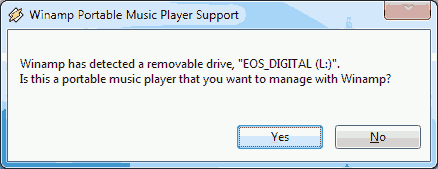Introduction
I didn’t find it easy to put together a thread-per-connection server in C++ using the Boost library (v1.46 at time of writing). But I’ve cobbled one together from fragments I’ve found on the internet and the example files. This is a pretty simplistic server unlike the more pure object-oriented versions presented in the examples.
I’m providing this as it may be of assistance to others who are having to deal with the same questions I’ve had.
Overview
This post documents the creation of a “boss” thread (as per the parlance in the Java netty I/O project) that uses asynchronous I/O to accept new connections which then spawns off a new thread for each new connection.
Establishing Listeners/Servers
It is entirely possible that you want to listen to more than just one port or interface:port combination. So create one server per listener.
We have to define our server class.
class my_server {
public:
my_server(
boost::asio::io_service *io_service,
const boost::asio::ip::tcp::endpoint &endpoint
);
void handle_accept( const boost::system::error_code& error );
bool failed;
private:
boost::asio::io_service *io_service;
boost::asio::ip::tcp::endpoint endpoint;
boost::asio::ip::tcp::acceptor *acceptor;
boost::shared_ptr<my_connection> connection;
};
Okay here we have a constructor to which we supply an io_service. We also provide the constructor an endpoint that describes the ip:port to which this listener will be bound.
There is a member function that will be called for each new connection (handle_accept()).
Finally our private member variables contain a pointer to the io_service we’re using, the endpoint this listener will be bound to (although strictly speaking we don’t need to remember this past the constructor), a pointer to an acceptor, and a pointer to a new class (I’ll show later) that will be created for each new connection.
So, before I illustrate the implementation of the my_server and introduce the my_connection classes I’ll show the main function that creates the servers and runs the io_service.
The Main Function
We assume there is a list of ip:port pairs we want to listen on. Note that, if a hostname/ip isn’t provided, then we bind to 0.0.0.0 (all interfaces).
/**
* main I/O loop
* sets up the listening address(es) and runs I/O asynchronous service
*/
int do_input_output(
std::list< std::pair<std::string, unsigned int> > listeners
) {
// create I/O service
boost::asio::io_service io_service;
// start a server for each listen address
std::list< boost::shared_ptr<my_server> > servers; // track in a list
for (
std::list< std::pair<std::string, unsigned int> >::iterator it = listeners.begin();
it != listeners.end();
it++
) {
std::string hostname = it->first;
unsigned int port = it->second;
// endpoint to assign to
boost::asio::ip::tcp::endpoint endpoint;
if ( ! hostname.empty() ) {
std::string address = get_ip_address( io_service, hostname );
if ( address.empty() ) {
std::cerr << "could not resolve " << hostname << std::endl;
return( 1 );
}
endpoint = boost::asio::ip::tcp::endpoint(
boost::asio::ip::address::from_string( address ),
port
);
} else {
endpoint = boost::asio::ip::tcp::endpoint(
boost::asio::ip::tcp::v4(),
port
);
}
// create server
boost::shared_ptr<my_server> server(
new my_server( &io_service, endpoint )
);
if ( server->failed ) {
std::cerr << "Failure in creatig server" << std::endl;
return( 1 );
}
servers.push_back( server );
std::cout << "listen on \"" << endpoint << "\"" << std::endl;
} // for each listener
// now start the I/O service
// can only stop by calling io_service.stop()
io_service.run();
return( 0 ); // everything went okay
}
Maybe you’re wondering about the get_ip_address() function:
/**
* hostname to ip address string (using DNS lookup)
*/
std::string get_ip_address(
boost::asio::io_service &io_service,
std::string hostname
) {
boost::asio::ip::tcp::resolver resolver( io_service );
boost::asio::ip::tcp::resolver::query query( hostname, "80" ); // any port number will do
boost::asio::ip::tcp::resolver::iterator iterator;
try {
iterator = resolver.resolve( query );
} catch ( boost::system::system_error e ) {
std:cerr << "Error resolving " << hostname << ": " << e.what() << std::endl;
return( "" );
}
boost::asio::ip::tcp::resolver::iterator end;
if ( iterator == end )
return( "" );
return( iterator->endpoint().address().to_string() );
}
The Server/Listener
Time to flesh out the implementation of the server.
First the constructor:
my_server::my_server(
boost::asio::io_service *io_service,
const boost::asio::ip::tcp::endpoint &endpoint
) {
this->io_service = io_service;
this->failed = false; // indicator whether construction failed
// it is a common problem to find that the port we bind to
// is already in use (say, another instance of this program)
try {
this->acceptor = new boost::asio::ip::tcp::acceptor( *io_service );
// Open the acceptor with the option to reuse the address
// (i.e. SO_REUSEADDR)
this->acceptor->open( endpoint.protocol() );
this->acceptor->set_option(
boost::asio::ip::tcp::acceptor::reuse_address(true)
);
this->acceptor->bind( endpoint );
this->acceptor->listen();
} catch ( boost::system::system_error e ) {
std::cerr << "Error binding to " << endpoint.address().to_string() << ":" << endpoint.port() << ": " << e.what() << std::endl;
this->failed = true;
return;
}
// successful bind!
// Now create a new "my_connection" object to receive new accepted socket
this->connection = boost::shared_ptr<my_connection>(
new my_connection()
);
this->connection->master_io_service = this->io_service;
this->acceptor->async_accept(
*(this->connection->socket), // new connection is stored here
this->connection->endpoint, // where the remote address is stored
boost::bind(
&my_server::handle_accept, // function to call on accept()
this, // object functions need a pointer to their object
boost::asio::placeholders::error // argument to call-back function
)
);
}
So what did this constructor do? Basically it attempted to bind to the desired address:port and then created a new my_connection class (details coming!!). This class is necessary as the “receiver” of the socket that contains the new connection (upon a successful accept).
Finally the acceptor was given an asynchronous accept operation, which basically means that the io_service.run() will loop until a new connection is made upon which the callback function provided will be called.
So now onto the handle_accept() member function of the my_server class.
void my_server::handle_accept(
const boost::system::error_code& error
) {
if ( error ) {
// accept failed
std::cerr << "Acceptor failed: " << error.message() << std::endl;
return;
}
std::cout << "Accepted connection from " << this->connection->endpoint.address().to_string() << ":" << this->connection->endpoint.port() << std::endl;
// time to create a thread and let THAT deal with the socket synchronously!
this->connection->thread = boost::shared_ptr<boost::thread>(
new boost::thread( worker, this->connection )
);
// re-build accept call
// we need a new socket/connection class
this->connection = boost::shared_ptr<my_connection>(
new my_connection()
);
this->connection->master_io_service = this->io_service;
this->acceptor->async_accept(
*(this->connection->socket),
this->connection->endpoint,
boost::bind(
&my_server::handle_accept,
this,
boost::asio::placeholders::error
)
);
}
Looks very similar to the constructor. Except that we deal with the newly accepted connection by firing off a new thread, and then let io_service we want to accept another connection.
Evidently we need a worker() function that will be the new thread’s starting point! But that comes later.
The Connection
Let’s define the my_connection class.
class my_connection {
public:
my_connection( void ); // constructor
// we must have a new io_service for EVERY THREAD!
boost::asio::io_service io_service;
// where we receive the accepted socket and endpoint
boost::shared_ptr<boost::asio::ip::tcp::socket> socket;
boost::asio::ip::tcp::endpoint endpoint;
// keep track of the thread for this connection
boost::shared_ptr<boost::thread> thread;
// keep track of the acceptor io_service so we can call stop() on it!
boost::asio::io_service *master_io_service;
// boolean to indicate a desire to kill this connection
bool close;
// NOTE: you can add other variables here that store connection-specific
// data, such as received HTML headers, or logged in username, or whatever
// else you want to keep track of over a connection
};
That’s right, an io_service per-thread! That allows us to simulate blocking reads/writes. I say simulate because any blocking read/write needs the ability to expire/timeout and Boost simply doesn’t provide this directly. More on that later.
Originally I attempted to use the io_service from the acceptor (“boss”) thread. This turned out to be a mistake. I needed one for each thread I was running. Actually this was the motivation for creating the my_connection class at all – because originally I wanted to avoid having to create another class.
First the constructor for the my_connection class.
my_connection::my_connection( void ) : close(false) {
// create new socket into which to receive the new connection
this->socket = boost::shared_ptr<boost::asio::ip::tcp::socket>(
new boost::asio::ip::tcp::socket( this->io_service )
);
}
The Worker
What does the thread do? It reads from the connection and responds. For the purposes of this example it will attempt to read non-blank lines and call a process_line() for each received non-blank line.
void worker(
boost::shared_ptr<my_connection> connection
) {
boost::asio::ip::tcp::socket &socket = *(connection->socket);
boost::asio::socket_base::non_blocking_io make_non_blocking( true );
socket.io_control( make_non_blocking );
char acBuffer[1024];
std::string line("");
while ( connection->close == false ) {
ssize_t bytes_read = read_with_timeout(
socket, // socket to read
acBuffer, // buffer to read into
sizeof(acBuffer), // maximum size of buffer
1 // timeout in seconds
);
if ( bytes_read < 0 )
break; // connection error or close
if ( bytes_read == 0 ) {
continue; // timeout
char const *pend = acBuffer + bytes_read;
char const *pstart = acBuffer;
char const *pchar = pstart;
// buffer may legitimately contain '\0' from network
// so we must always ensure we don't go over the number
// of bytes actually read
while ( ( pchar < pend ) && ( *pchar != '\0' ) ) {
if ( ( *pchar != '\n' ) && ( *pchar != '\r' ) ) {
pchar++;
continue;
}
// non-blank line detected?
if ( pchar > pstart ) {
line += std::string( pstart, pchar - pstart );
// ***THIS IS WHAT WE ULTIMATELY WANTED TO ACHIEVE!!!***
process_line( *connection, line );
line = "";
}
// skip over newlines
while ( ( pchar < pend ) && ( ( *pchar == '\n' ) || ( *pchar == '\r' ) ) )
pchar++;
pstart = pchar;
continue;
}
if ( pchar > pstart ) {
// put remaining non-terminated text into line buffer
line += std::string( pstart, pchar - pstart );
}
} // while connection not to be closed
}
It is up to the user to write their own process_line( my_connection &connection, std::string line ) function.
Simulating a Synchronous Read With Timeout
Now how about that magic read_with_timeout function, hey? Surely Boost provide such a function? Sadly, no. I slightly modified the following code off the Internet:
/**
* helper function
*/
void set_result(
boost::optional<boost::system::error_code> *destination,
boost::system::error_code source
) {
destination->reset( source );
}
/**
* helper function
*/
void set_bytes_result(
boost::optional<boost::system::error_code> *error_destination,
size_t *transferred_destination,
boost::system::error_code error_source,
size_t transferred_source
) {
error_destination->reset( error_source );
*transferred_destination = transferred_source;
}
/**
* emulate synchronous read with a timeout on socket
*
* returns -1 on error or socket close, 0 on timeout, or bytes received
*/
ssize_t read_with_timeout(
boost::asio::ip::tcp::socket &socket,
void *buf,
size_t count,
int seconds
) {
boost::optional<boost::system::error_code> timer_result;
boost::optional<boost::system::error_code> read_result;
size_t bytes_transferred;
// set up a timer on the io_service for this socket
boost::asio::deadline_timer timer( socket.io_service() );
timer.expires_from_now( boost::posix_time::seconds( seconds ) );
timer.async_wait(
boost::bind(
set_result,
&timer_result,
boost::asio::placeholders::error
)
);
// set up asynchronous read (respond when ANY data is received)
boost::asio::async_read(
socket,
boost::asio::buffer( (char *)buf, count ),
boost::asio::transfer_at_least( 1 ),
boost::bind(
set_bytes_result,
&read_result,
&bytes_transferred,
boost::asio::placeholders::error,
boost::asio::placeholders::bytes_transferred
)
);
socket.io_service().reset();
// set default result to zero (timeout) because another thread
// may call io_service().stop() deliberately to interrupt the
// the read (say, if it wanted to signal the thread that there
// was data to write)
ssize_t result = 0;
bool resultset = false;
while ( socket.io_service().run_one() ) {
if ( read_result ) {
//boost::system::error_code e = (*read_result);
//std::cerr << "read_result was " << e.message() << std::endl;
timer.cancel();
if ( resultset == false ) {
result = ( bytes_transferred <= 0 ) ? -1 : bytes_transferred;
resultset = true;
}
read_result.reset();
} else if ( timer_result ) {
socket.cancel();
if ( resultset == false ) {
result = 0;
resultset = 0;
}
timer_result.reset();
}
}
return( result );
}
You can also have a very similar write function…
ssize_t write_with_timeout(
boost::asio::ip::tcp::socket &socket,
void const *buf,
size_t count,
int seconds
) {
boost::optional<boost::system::error_code> timer_result;
boost::optional<boost::system::error_code> write_result;
size_t bytes_transferred;
boost::asio::deadline_timer timer( socket.io_service() );
timer.expires_from_now( boost::posix_time::seconds( seconds ) );
timer.async_wait(
boost::bind(
set_result,
&timer_result,
boost::asio::placeholders::error
)
);
boost::asio::async_write(
socket,
boost::asio::buffer( (char *)buf, count ),
boost::asio::transfer_at_least( count ), // want to transfer ALL of it
boost::bind(
set_bytes_result,
&write_result,
&bytes_transferred,
boost::asio::placeholders::error,
boost::asio::placeholders::bytes_transferred
)
);
socket.io_service().reset();
size_t result = -1;
bool resultset = false;
while ( socket.io_service().run_one() ) {
if ( write_result ) {
timer.cancel();
if ( resultset == false ) {
result = ( bytes_transferred <= 0 ) ? -1 : bytes_transferred;
resultset = true;
}
write_result.reset();
} else if ( timer_result ) {
socket.cancel();
if ( resultset == false ) {
result = 0;
resultset = true;
}
timer_result.reset();
}
}
return( result );
}
The End
That’s all for now! You have a thread-per-connection server in Boost C++ v1.46 that emulates blocking read/writes with timeouts.
Enjoy!











Recent Comments